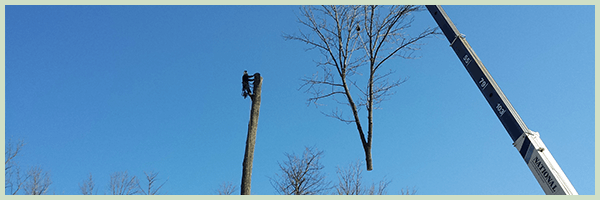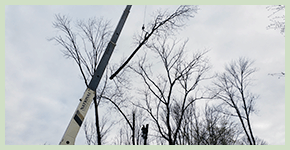Serving Pottstown and the Surrounding Areas

Understand the harm of tree topping
Sometimes, you may feel that the trees in your yard are too big and want to reduce their height. Before topping, it is important for you to know its harmful effects. Call the professionals at Richard Brown Inc. of Pottstown, PA to learn more about the effects of tree topping and find out alternative options.

What is tree topping?
Topping is the indiscriminate cutting of tree branches to stubs or lateral branches that are not large enough to assume the terminal role.
The other common names for topping include “heading,” “tipping,” “hat-racking,” and “rounding over.”

Hire the right arborist
If you really want to reduce the height of your tree, you should hire a professional arborist to do it for you.
We have experienced arborists who can do the topping work without causing much harm to the tree.
If you’re looking for tree services at competitive prices, Richard Brown Inc. is the right option for you. Contact us today to take advantage of our services.
We have been providing various types of tree services for 50 years.
Hire Our Professionals If You're Looking for Topping Service.
610-323-6656
Harmful effects of tree topping
Topping stresses trees:
Topping often removes 50 to 100 percent of the leaf-bearing crown of a tree. The removal of leaves can temporarily starve the tree. The severity of the pruning triggers a sort of survival mechanism. Topping can seriously weaken the tree, and the tree may even die.
Topping causes decay:
A tree is biologically equipped to close wounds, provided the tree is healthy enough and the wound is not too large. Cuts made along a limb between lateral branches create stubs with wounds that the tree may not be able to close, causing decay.
Topping can lead to sunburn:
Branches within a tree’s crown produce thousands of leaves to absorb sunlight. When the leaves are removed, the remaining branches and trunk are suddenly exposed to high levels of light and heat. The result may be sunburn of the tissues beneath the bark, which can lead to cankers, bark splitting, and the death of some branches.
Topping creates hazards:
Topping is done to reduce the height of a tree. In some species, new shoots grow quickly as high as 20 ft. in 1 year after topping. These new shoots are prone to breaking, especially during windy conditions, which is more hazardous than before.
Topping makes trees ugly:
Topping removes the ends of the branches, often leaving ugly stubs. It also destroys the natural form of a tree.
Topping is expensive:
Topping can also be expensive. If the tree survives, it will require pruning. If it dies or is damaged by a storm, you need to remove it. Topped trees are prone to breaking and can be hazardous. Because topping is considered an unacceptable pruning practice, any damage caused by branch failure of a topped tree may lead to a finding of negligence in a court of law.
Alternatives to topping:
Providing clearance for utility lines is an alternative to topping. If practical, branches should be removed back to their point of origin. If a branch must be shortened, it should be cut back to a lateral that is large enough to assume the terminal role. A rule of thumb is to cut back to a lateral that is at least one-third the diameter of the limb being removed.
This method of branch reduction helps in preserving the natural form of the tree. However, if large cuts are involved, the tree may not be able to close over and compartmentalize the wounds. Sometimes, the best solution is to remove the tree and replace it with a species that is more appropriate for the site.